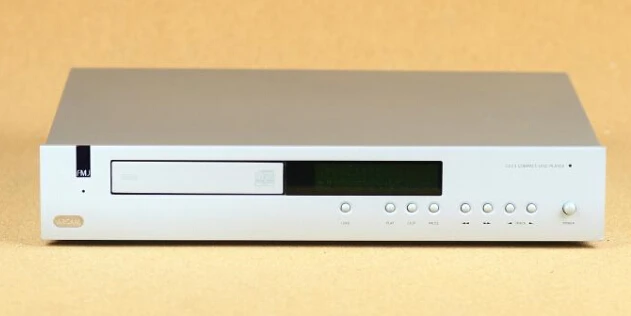April Music was originally introduced to me during the 2004 Consumer Electronics Show in Las Vegas. The individuals behind this young South Korean enterprise struck me as engaging and imaginative. It produced several excellent sounding hi-fi singles under the Stello brand name, in the Japanese high-end mold. A few years later, this strange object appeared, styled by British industrial design guru Kenneth Grange CBE – instantly setting it apart from virtually all other one-box hi-fi systems I’ve seen, save perhaps Jacob Jensen’s Bang & Olufsen-era Bang & Olufsen-era Bang & Olufsen-era Bang & Olufsen-era Bang & Olufsen-era Bang & Olufsen Grange, a cofounder of Pentagram and a Design Council award winner, designed Britain’s National High Speed Train, Kodak’s Instamatic Camera, Wilkinson shavers, and Parker fountain pens, as well as consulting work in Japan; he even styled the current London taxi. April Music is responsible for the electronics inside.
The Music Center was introduced in 2006 and featured a top-loading CD player, AM/FM tuner, 50W transistor power amp with a line input and USB connections, all housed in a small chassis measuring 278x84x278mm and weighing 7kg. The CD player is a pleasure to use, with a beautiful glass cover that slides down a channel in the top plate, as long as you don’t lose its weighty magnetic puck. The retro-looking red LED display takes centre stage on the front panel, with eight buttons – standby, volume, CD play/pause, CD stop, CD track search up and down, and mode – which toggles between CD, tuner, auxiliary stereo inputs, and USB – all of which have a good tactile response.
The rear USB input is for computers, while the side panel socket will work with both USB memory sticks and USB hard drives directly, playing MP3, WMA and OGG files up to 192kbps. The gadget can also record at 128kbps (in MP3 format) directly to a memory stick from a PC or tuner, which feels absolutely antiquated in 2015! The supplied remote is a 55x85mm credit card device only 7mm thick but housing 24 buttons with a remarkable 160º usable angle, allowing this to work almost anywhere in the room. Overall, it’s a well-thought-out design that emphasizes understatement, usability, and minimalism. At this price, the fit and finish of the various parts is also superb.
There aren’t many one-box hi-fis worth getting out of bed for in terms of sound, but the Aura Note was – and still is – better than the majority. Typical instances of the breed sound harsh and screechy, with a two-dimensional soundstage and a general lack of musicality, yet this sounds warm and natural. There’s a satisfying richness to it, especially in the upper midband, when paired with a decent pair of efficient modern floor standers like the Q Acoustics 2050i. Above that, there’s a crisp, open presence region with good detail and a decent attempt at replicating the recorded sound in all three dimensions. It’s also musical, following vocal lines and expressing the singer’s meaning and mood with skillful handling of dynamic inflections. Treble is crisp and detailed, with no roughness in a way you wouldn’t anticipate.
The Aura Note Music Center, as a one-box system, performs admirably – notably for a mid-decade design that cost only £1,500 when it was released in the United Kingdom. It isn’t quite a replacement for a top-quality separates hi-fi, but still lets you really enjoy music in your living room, kitchen or bedroom – basically wherever your main hi-fi isn’t! When you consider its excellent level of finish and genuine attention to detail when it comes to ergonomics, it’s a truly gorgeous object. The sole drawback is the lack of a non-USB digital input; however, the new v2 model, which debuted at CES 2015, includes this capability as well as more power. Although the combination of British design and South Korean technology may not appear to be a natural fit, it is in this case.







